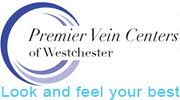 In a preview post we shared some biographical information on Dr. Arlen Fleisher and the first portion of our interview. Today we follow up with some additional questions for Dr. Fleisher and information he provided about pllebology and vein-related procedures.
In a preview post we shared some biographical information on Dr. Arlen Fleisher and the first portion of our interview. Today we follow up with some additional questions for Dr. Fleisher and information he provided about pllebology and vein-related procedures.
Q. Describe a typical day in the clinic versus your previous role as a surgeon.
A. The main difference working in the clinic as opposed to the hospital is that I have total control of the environment. The office is extremely efficient and patient friendly. My procedures are obviously much shorter and performed under local anesthesia so we really get to know and understand our patients needs.
We are an ICAVL certified vascular lab so all of our studies are done right in the office and read immediately. This enables us to immediately discuss with the patient their diagnosis and treatment options, as opposed to going elsewhere for their study and then having to come back to the office.
Q. What are a few of the key things you learned in setting up your own practice.
A. It is important to be very hands on and do your homework especially when it comes to capital purchases.
Another key is to have the right staff that can work as a team to provide an optimum level of patient comfort and satisfaction.
Q. Describe the impact of owning an all cash practice versus working in a specialty that was heavily reliant on insurance reimbursements.
A. That is a common fallacy that many people believe. Symptomatic chronic venous insufficiency and varicose veins are the most common problems that we deal with. They are considered medical necessity and therefore reimbursed by insurance.
The majority of the practice is therefore insurance based. There is a component of the practice which is cosmetic and that includes the treatment of spider veins etc.
Overview of Common Procedures at the Vein Clinic:
Endovenous Laser Treatment of Varicose Veins
Endovenous laser treatment is a minimally invasive, in-office treatment alternative to surgical stripping of the great saphenous vein. Instead of removing the saphenous vein, it is closed in place. The skin on the inside of the knee is anesthetized and a small laser fiber is inserted through a needle stick into the damaged vein. Pulses of laser light are delivered inside the vein, which causes the vein to collapse and seal shut.
This procedure is done in-office under local anesthesia. Following the procedure a bandage or compression hose is placed on the treated leg. Patients are able to walk immediately after the procedure and most individuals are able to return to work the next day. Endovenous Laser Treatment is FDA-approved for the treatment of the greater saphenous vein.
Possible complications of endovenous laser treatment are thermal skin burns and transient numbness.
Ultrasound Guided Sclerotherapy (Echo-Sclerotherapy) of Varicose Veins
Ultrasound Guided Sclerotherapy (Echo-Sclerotherapy) is an in-office treatment alternative to surgical stripping. With this technique and based on the clinical judgment of the doctor, sclerotherapy is done with either a liquid or “foamed” sclerosant, while the doctor visually monitors the vein on an ultrasound screen. This enables treatment of veins that can’t be seen because they are below the surface of the skin and would otherwise require surgical removal. Ultrasound imaging is used to guide a needle into the abnormal vein and deliver medication to destroy the lining of the blood vessel and seal it shut. Ultrasound guided sclerotherapy is primarily used to treat large veins beneath the surface of the skin.
Possible complications of ultrasound guided sclerotherapy include: Inadvertent intra-arterial injection, skin ulceration, hyperpigmentation, telangiectatic matting, superficial phlebitis, deep vein thrombosis, and allergic reaction.
Ambulatory Phlebectomy of Varicose Veins
Ambulatory phlebectomy is a method of surgical removal of surface varicose veins. Ambulatory phlebectomy is usually performed in a doctor’s office using local anesthesia. The area surrounding the varicose vein clusters is flooded with anesthetic fluid. A needle is then used to make a puncture next to the varicose vein and a small hook is inserted into the needle hole and the varicose vein is grasped and removed. The punctures typically leave nearly imperceptible scars.
After the vein has been removed by phlebectomy, a bandage and/or compression stocking is worn for a short period. Ambulatory phlebectomy is often performed in conjunction with minimally invasive endovenous catheter procedures or PIN stripping.
Possible complications of light based treatments are skin burns, blistering, bruising, and scarring.
Conservative Treatments for Varicose Veins
Surgery and endovenous procedures aren’t right for everyone, so Premier Vein Centers offers vein treatments that take a more conservative approach. Conservative treatments include compression stockings and herbal treatments.
Compression Stockings for Varicose Veins
Graduated compression stockings are a mainstay of initial/conservative management of venous disease. Graduated compression stockings are tighter around the foot and ankle and the compression decreases as it goes up the leg. This “graduated compression” promotes the normal flow of blood up the leg.
Possible complications of graduated compression stockings are obstruction of venous or arterial blood flow due to improper sizing or undiagnosed peripheral vascular disease.
